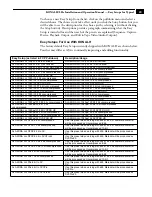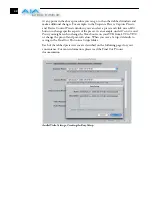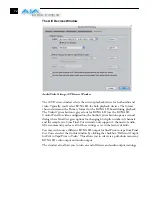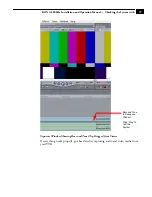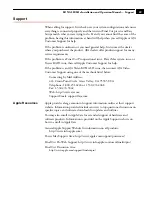
78
Using 8-bit Versus 10-bit Video
While both 8- and 10-bit uncompressed video are capable of providing excellent
quality broadcast video, 10-bit represents a significantly higher quality and is
preferable in many situations.
Because 10-bit video has four times the numerical precision when compared to 8-
bit, it has a signal-to-noise ratio 12 db higher than 8-bit video.
Visually, in 8-bit video compared to 10-bit video, you will notice a substantial
difference. In 8-bit video there will be “contour lines” or “striations” visible,
particularly noticeable in scenes having soft gradients like a ramp or sunset. For
example, if a sky region is mostly the same color but varies by only a few digital
numbers from one side of the picture to another, you may see contour lines where
the signal passes from one digital value to the next higher value.
Since each numerical value in a 10-bit system is only one fourth as large as an 8-bit
system's, these contours become invisible and the sky varies smoothly.
10-bit video is often used when the source and output video (or “master”) is also 10-
bit. Even if the input and/or output video is 8-bit, a 10-bit “project” will still
maintain a higher quality when there is a significant amount of effects rendering
involved.
Industry standard professional mastering formats—Sony Digital Betacam for
Standard Definition and Panasonic D5 for High Definition—are both true 10-bit
formats.
Summary of Contents for KONA LH
Page 1: ...Installation and Operation Guide Models LHe and LH September 25 2007 ...
Page 4: ...iv ...
Page 8: ...4 ...
Page 22: ...14 ...
Page 23: ...1 15 KONA LH LHe Installation and Operation Manual In This Manual ...
Page 24: ...16 ...
Page 45: ...1 37 KONA LH LHe Installation and Operation Manual Genlock and Your System ...
Page 46: ...38 ...
Page 90: ...84 ...
Page 94: ...A 4 ...
Page 100: ...I 6 ...


